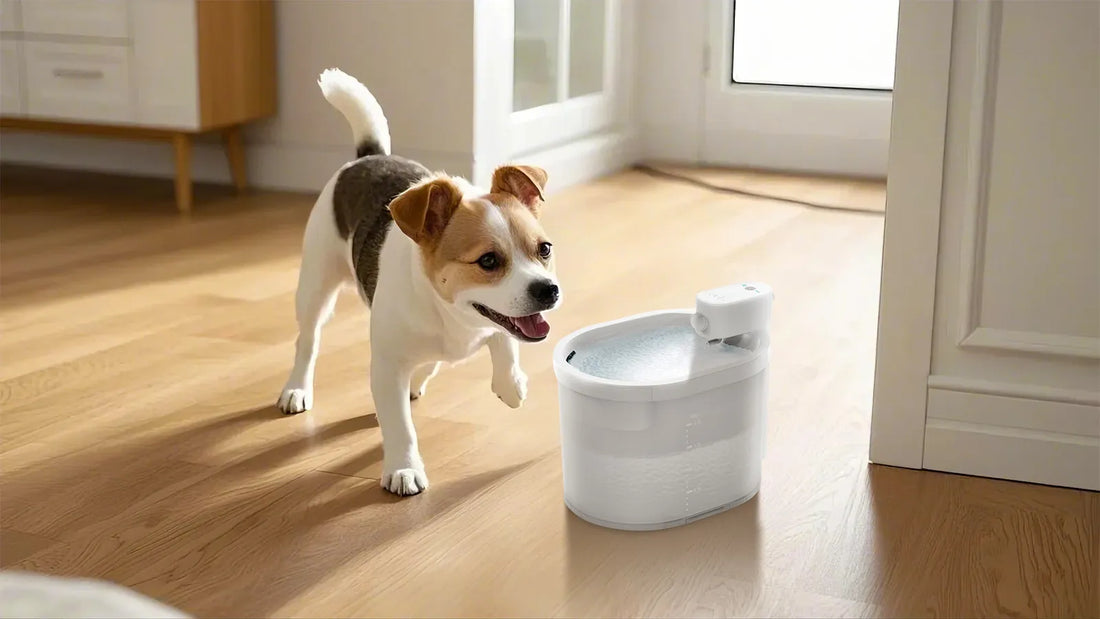Keeping your dog's bowl clean is essential for their health and well-being. Algae growth in a dog bowl is not only unsightly but can also pose health risks to your furry friend. In this comprehensive guide, we will explore various methods to get rid of algae in your dog's bowl and prevent it from coming back.
Understanding Algae Growth in Dog Bowls
Algae are simple, plant-like organisms that thrive in moist environments. They can grow in your dog's bowl if it is exposed to sunlight or if the water is not changed regularly. Algae can produce toxins that are harmful to dogs, so it is crucial to address the issue promptly.
Why Algae in Dog Bowls is a Problem
Algae in your dog's bowl can lead to several problems. Firstly, it can make the water taste unpleasant, discouraging your dog from drinking enough water. Secondly, certain types of algae can produce harmful toxins that can cause gastrointestinal issues, skin irritation, or even more severe health problems in dogs.
How to Remove Algae from Your Dog's Bowl
1. Regular Cleaning
The most effective way to prevent algae growth is to clean your dog's bowl regularly. Wash the bowl with hot, soapy water at least once a day. Use a brush to scrub away any algae or residue that may be clinging to the sides or bottom of the bowl.
2. Use Vinegar
Vinegar is a natural cleaning agent that can help remove algae. Mix equal parts of white vinegar and water, and soak the bowl in the solution for about 30 minutes. After soaking, scrub the bowl thoroughly and rinse it well to remove any vinegar residue.
3. Baking Soda Scrub
Baking soda is another effective natural cleaner. Sprinkle baking soda on the bowl and use a damp cloth or sponge to scrub away the algae. Rinse the bowl thoroughly after scrubbing to ensure no baking soda is left behind.
4. Bleach Solution
For a more thorough cleaning, you can use a bleach solution. Mix one tablespoon of bleach with one gallon of water and soak the bowl for about 10 minutes. Rinse the bowl thoroughly with clean water to remove any bleach residue. Make sure the bowl is completely dry before refilling it with water.
Preventing Algae Growth in Dog Bowls
1. Keep the Bowl Out of Direct Sunlight
Algae thrive in sunlight, so it is essential to keep your dog's bowl in a shaded area. If your dog spends time outdoors, consider placing the bowl under a tree or patio to minimize exposure to sunlight.
2. Change the Water Frequently
Stagnant water is a breeding ground for algae. Make it a habit to change the water in your dog's bowl at least once a day, or more frequently if your dog drinks a lot of water. Fresh water will discourage algae growth and keep your dog hydrated.
3. Use a Ceramic or Stainless Steel Bowl
Ceramic and stainless steel bowls are less porous than plastic bowls, making it harder for algae to grow. Additionally, these materials are easier to clean and less likely to harbor bacteria or algae.
4. Add a Few Drops of Grapefruit Seed Extract
Grapefruit seed extract is a natural algaecide that can help prevent algae growth. Add a few drops of the extract to your dog's water bowl. It is safe for dogs and will not alter the taste of the water.
Additional Tips for Maintaining a Clean Dog Bowl
1. Inspect the Bowl Regularly
Regularly inspect your dog's bowl for any signs of algae or residue. Early detection can prevent the problem from escalating and ensure your dog always has access to clean water.
2. Rotate Bowls
If you have multiple bowls, rotate them regularly. This allows each bowl to dry completely between uses, reducing the chances of algae growth.
3. Use a Water Fountain
Consider using a water fountain designed for pets. These fountains keep the water moving, which discourages algae growth and ensures your dog has access to fresh, clean water at all times.
Health Risks Associated with Algae in Dog Bowls
Algae in your dog's bowl can lead to various health issues, including gastrointestinal problems, skin irritation, and even poisoning in severe cases. It is essential to take immediate action if you notice algae in your dog's bowl to protect your pet's health.
When to Consult a Veterinarian
If your dog shows signs of illness after drinking from a bowl with algae, such as vomiting, diarrhea, or lethargy, consult your veterinarian immediately. Early intervention can prevent more severe health problems and ensure your dog receives the necessary care.
Maintaining a clean dog bowl is a simple yet crucial aspect of pet care. By following the tips and methods outlined in this guide, you can effectively get rid of algae in your dog's bowl and ensure your pet has access to clean, safe drinking water. Your dog's health and happiness depend on it!













